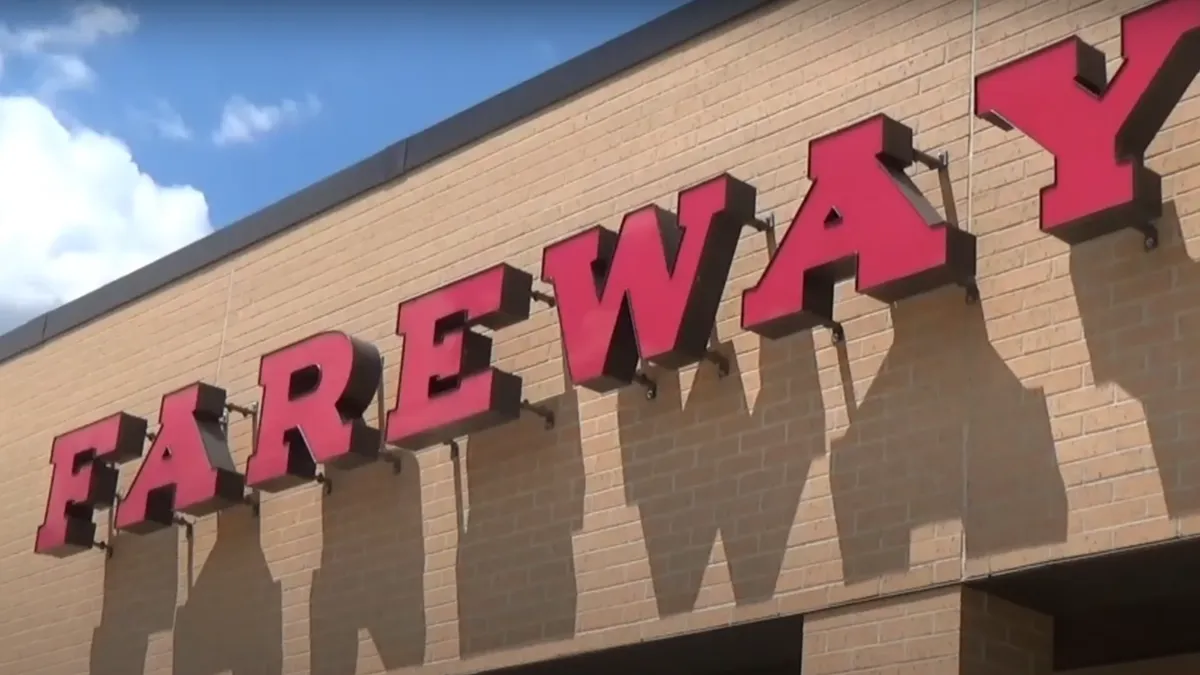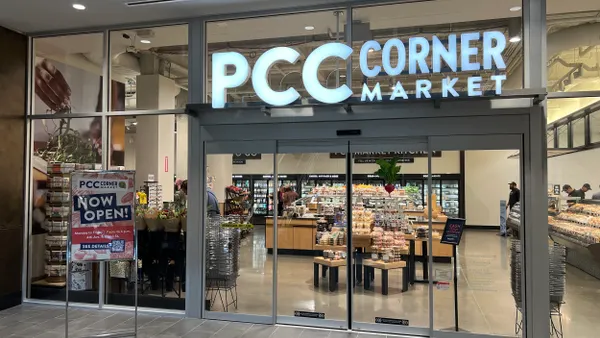Colfax, Iowa, was in danger of becoming a food desert when the owner of the sole grocery store, Shugar’s, decided to retire.
But Jim Shugar, the store's owner, began talking to Fareway and late last year, with the help of local officials and a sizable state grant, the chain grocer became the new owner of the former mom-and-pop establishment, said City Administrator Wade Wagoner. After spending several weeks refurbishing the store, Fareway held a grand opening event on March 17.
In addition to providing a lifeline for the community, the store is the first location in a new small-format pilot program for Fareway that could extend to other Iowa towns, according to Wagoner. At 8,000 square feet, the Colfax location is about one-third the average Fareway store size and features an assortment of groceries and fresh goods. The grocer operates 124 supermarkets across Iowa, Illinois, Minnesota, Missouri, Nebraska and South Dakota.
Fareway did not return requests for an interview about the new location and the pilot program.
The pilot comes at a time when independent grocers are struggling to stay afloat, and as competing chains build out their own small-format grocery stores in rural areas. Dollar General, which operates stores in 29 Iowa communities, is rapidly building new locations and adding fresh produce, frozen foods and other grocery staples to stores. Hy-Vee, a close competitor to Fareway, is opening Dollar Fresh stores in small towns across the Midwest.
Inside the store
After acquiring the location in December, Fareway embarked on a $2.2 million renovation of the space, Wagoner said. The store holds a full-service meat counter, fresh produce, a few grocery aisles and "low, competitive prices," according to an announcement from the City of Colfax announcing the grand opening.
“Somehow it feels bigger even though the footprint is the same,” Wagoner said.
That’s partly due to Fareway's reconfiguration that turned what was formerly inventory space into the full-service butcher counter, Wagoner said. Additionally, Fareway has the same number of aisles as the former store, but made the shelves deeper and the aisles “feel wider,” Wagoner said.
There are fewer brand varieties for certain items, but Wagoner said the store stocks all of the essentials: “I've already had several people in town say that, ‘I won't have to leave town to buy any of my groceries.’”
Local enticements helped secure the store location for a community that wanted to continue having a full-service grocery option. In addition to a commitment of up to $300,000 over 10 years, the city also received a $100,000 grant from the state for the store. “[The state] realized that this was a pilot program, and that if things went well here, that this could be a model to bring grocery stores to other small-town Iowa communities,” Wagoner said.
Responding to the competition and food insecurity
If Fareway hadn’t arrived, residents would have had to drive 13 to 15 miles to get to the closest Fareway and Hy-Vee stores, Wagoner said.
“It keeps us from being a food desert,” he said.
Wagoner said he sees the store as an anchor for the downtown area that will drive economic growth: “We hope that some of our storefronts will either improve or the ones that are vacant will get full as a result of Fareway’s investment, because they likely will bring a few more people to our downtown.”
In Iowa, one in 10 people and one in seven children face food insecurity, according to Feeding America, which operates five food banks in the state. Food Bank of Iowa CEO Michelle Book has said food insecurity doubled in the state due to the pandemic.
“It’s a fallacy to think that absolutely everybody has access to cheap, reliable transportation. Not everybody does,” Wagoner said. “When you plop this Fareway down in the middle of our town, almost everybody can access it.
The store also presents what could become a competitive response to the likes of Walmart, Dollar General and Hy-Vee. Hy-Vee has rolled out alternative formats in recent years, including its Dollar Fresh stores, which combine grocery with elements of a dollar store and target rural areas. Dollar Fresh debuted in late 2018. CEO Randy Edeker recently said the company plans to open 14 of these discount locations this year, more than doubling its footprint.
Edeker told Grocery Dive in 2019 that the grocer has had to adjust pricing at its stores in small, rural towns. "You also have to look at the demographics of the area you're in," Edeker said. "There are parts of Iowa and northern Missouri that are just not in economically great shape."
Walmart, meanwhile, operates 60 Iowa stores and tends to draw shoppers from a wider radius than conventional supermarkets. By placing low-cost grocery stores in small towns, Fareway could win over shoppers who want to save on driving time. Dollar General, which operates stores in Iowa towns like Monona and Muscatine, is adding fresh produce to 700 more locations this year and plans to open 1,050 additional stores.
The Colfax store isn't Fareway's first alternative format. In 2016, it opened a standalone meat market in Omaha, Nebraska, featuring fresh meats as well as artisan cheese, wine and beer, and now operates several Midwestern locations.
While the future of Fareway's small-store pilot remains uncertain, in Colfax, residents are confident the store will be a useful service for decades to come.
“Fareway has never closed a grocery store in a community where they've opened one up,” Wagoner said.












